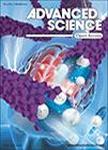版权所有:内蒙古大学图书馆 技术提供:维普资讯• 智图
内蒙古自治区呼和浩特市赛罕区大学西街235号 邮编: 010021

作者机构:Department of Physics National Dong Hwa University Hualien974301 Taiwan Department of Electrical and Computer Engineering University of California Los AngelesCA90095 United States Institute of Photonics National Yang Ming Chiao Tung University Tainan711010 Taiwan Institute of Optoelectronics National Chung Hsing University Taichung402202 Taiwan Department of Optoelectronics and Materials Technology National Taiwan Ocean University Keelung202301 Taiwan Department of Materials Science and Engineering National Dong Hwa University Hualien974301 Taiwan Department of Electrical Engineering National Kaohsiung Normal University Kaohsiung824004 Taiwan Department of Opto-Electronic Engineering National Dong Hwa University Hualien974301 Taiwan R&D Center Taiwan Semiconductor Manufacturing Company Hsinchu300091 Taiwan Department of Dermatology National Taiwan University Hospital and College of Medicine National Taiwan University Taipei100229 Taiwan
出 版 物:《Advanced Science》 (Adv. Sci.)
年 卷 期:2023年第10卷第28期
页 面:e2301493页
核心收录:
基 金:J.Y.S and D.H.N contributed equally to this work. The authors were grateful to R. C. S from Delta Electronics for his support in numerical calculations. The authors also thank L. C. W Y. W. C and M. L. L for their assistance with the nanoscale inspections especially the use of facilities at the Joint Center for High Valued Instruments of the National Sun Yat‐sen University and Core Facility Center of the National Cheng Kung University. C. C. L acknowledges strong funding from the Ministry of Science and Technology of Taiwan under the received grant nos. MOST 111‐2112‐M‐259‐015 and MOST 110‐2112‐M‐259‐008.J.Y.S and D.H.N contributed equally to this work. The authors were grateful to R. C. S from Delta Electronics for his support in numerical calculations. The authors also thank L. C. W Y. W. C and M. L. L for their assistance with the nanoscale inspections especially the use of facilities at the Joint Center for High Valued Instruments of the National Sun Yat-sen University and Core Facility Center of the National Cheng Kung University. C. C. L acknowledges strong funding from the Ministry of Science and Technology of Taiwan under the received grant nos. MOST 111-2112-M-259-015 and MOST 110-2112-M-259-008
主 题:Nanowires
摘 要:The metal‒semiconductor heterojunction is imperative for the realization of electrically driven nanolasers for chip-level platforms. Progress in developing such nanolasers has hitherto rarely been realized, however, because of their complexity in heterojunction fabrication and the need to use noble metals that are incompatible with microelectronic manufacturing. Most plasmonic nanolasers lase either above a high threshold (101‒103 MW cm−2) or at a cryogenic temperature, and lasing is possible only after they are removed from the substrate to avoid the large ohmic loss and the low modal reflectivity, making monolithic fabrication impossible. Here, for the first time, record-low-threshold, room-temperature ultraviolet (UV) lasing of plasmon-coupled core‒shell nanowires that are directly grown on silicon is demonstrated. The naturally formed core‒shell metal‒semiconductor heterostructure of the nanowires leads to a 100-fold improvement in growth density over previous results. This unprecedentedly high nanowire density creates intense plasmonic resonance, which is outcoupled to the resonant Fabry‒Pérot microcavity. By boosting the emission strength by a factor of 100, the hybrid photonic‒plasmonic system successfully facilitates a record-low laser threshold of 12 kW cm−2 with a spontaneous emission coupling factor as high as ≈0.32 in the 340‒360 nm range. Such architecture is simple and cost-competitive for future UV sources in silicon integration. © 2023 The Authors. Advanced Science published by Wiley-VCH GmbH.